
How to Use SIM900A gsm module: Examples, Pinouts, and Specs
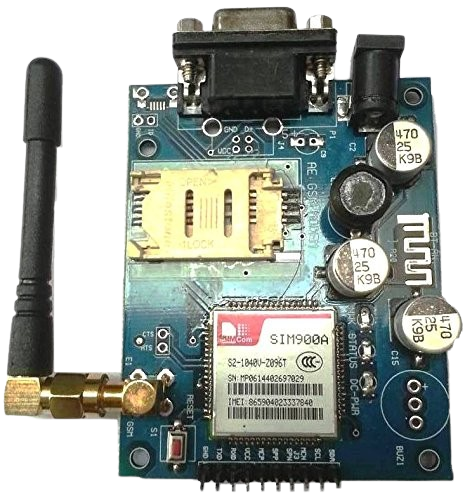
 Design with SIM900A gsm module in Cirkit Designer
Design with SIM900A gsm module in Cirkit DesignerIntroduction
The SIM900A GSM module, manufactured by SIMCOM (Part ID: SIM900A), is a compact and powerful device designed for communication over GSM networks. It supports functionalities such as SMS, voice calls, and GPRS data transmission. This module is widely used in IoT applications, remote monitoring systems, and embedded projects requiring reliable wireless communication.
Explore Projects Built with SIM900A gsm module
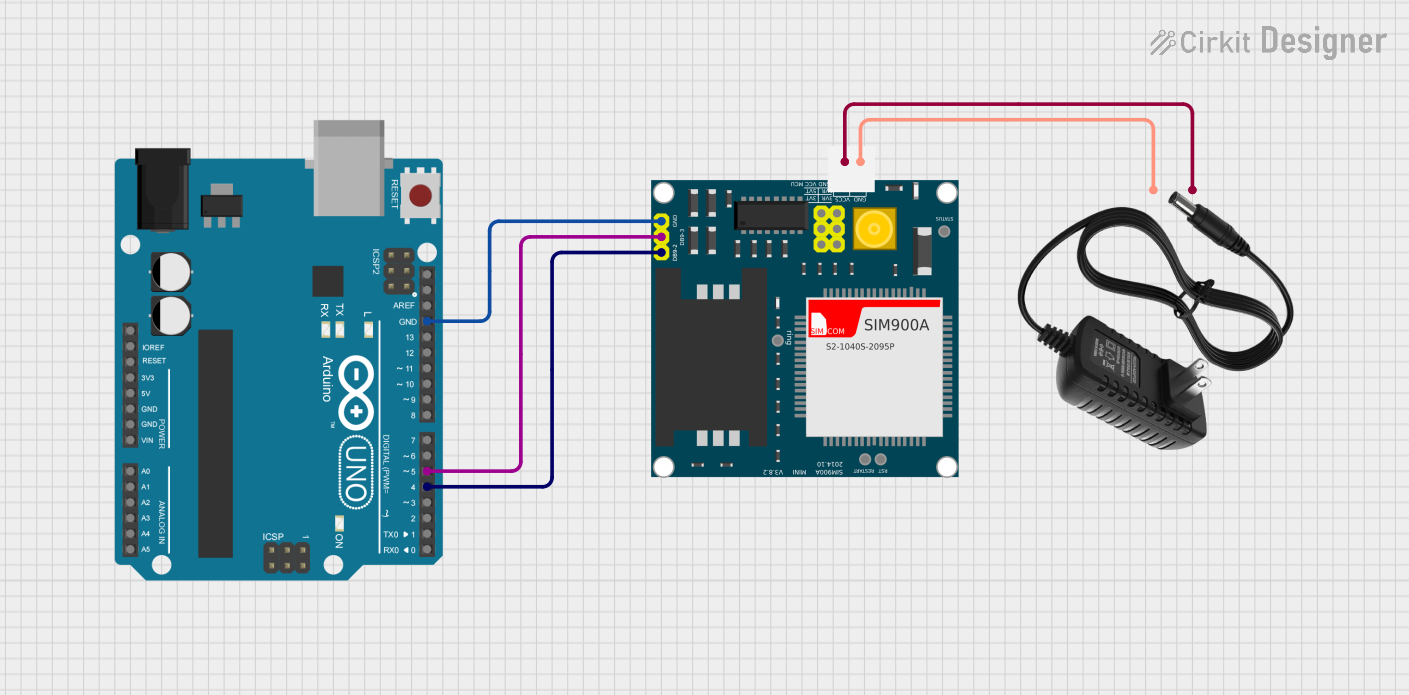
 Open Project in Cirkit Designer
Open Project in Cirkit Designer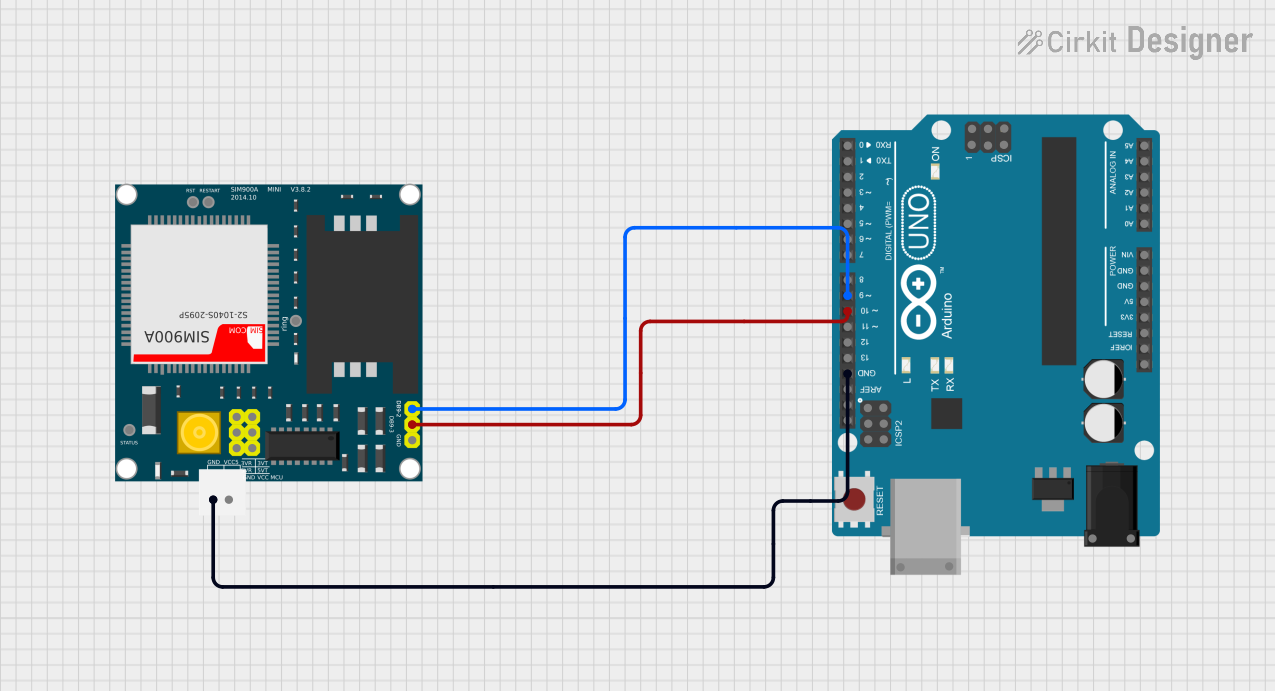
 Open Project in Cirkit Designer
Open Project in Cirkit Designer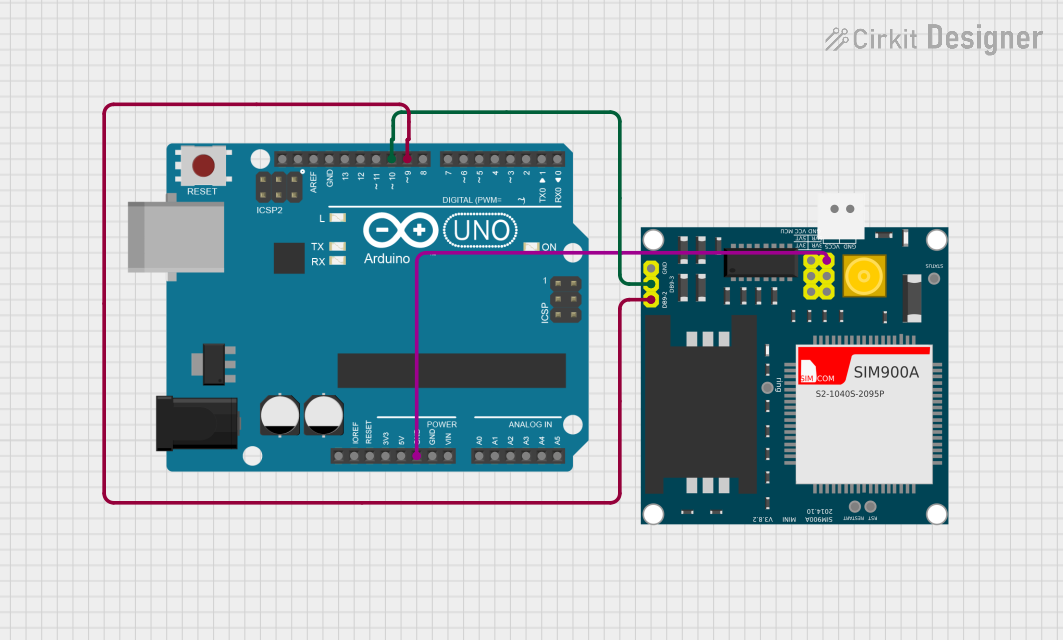
 Open Project in Cirkit Designer
Open Project in Cirkit Designer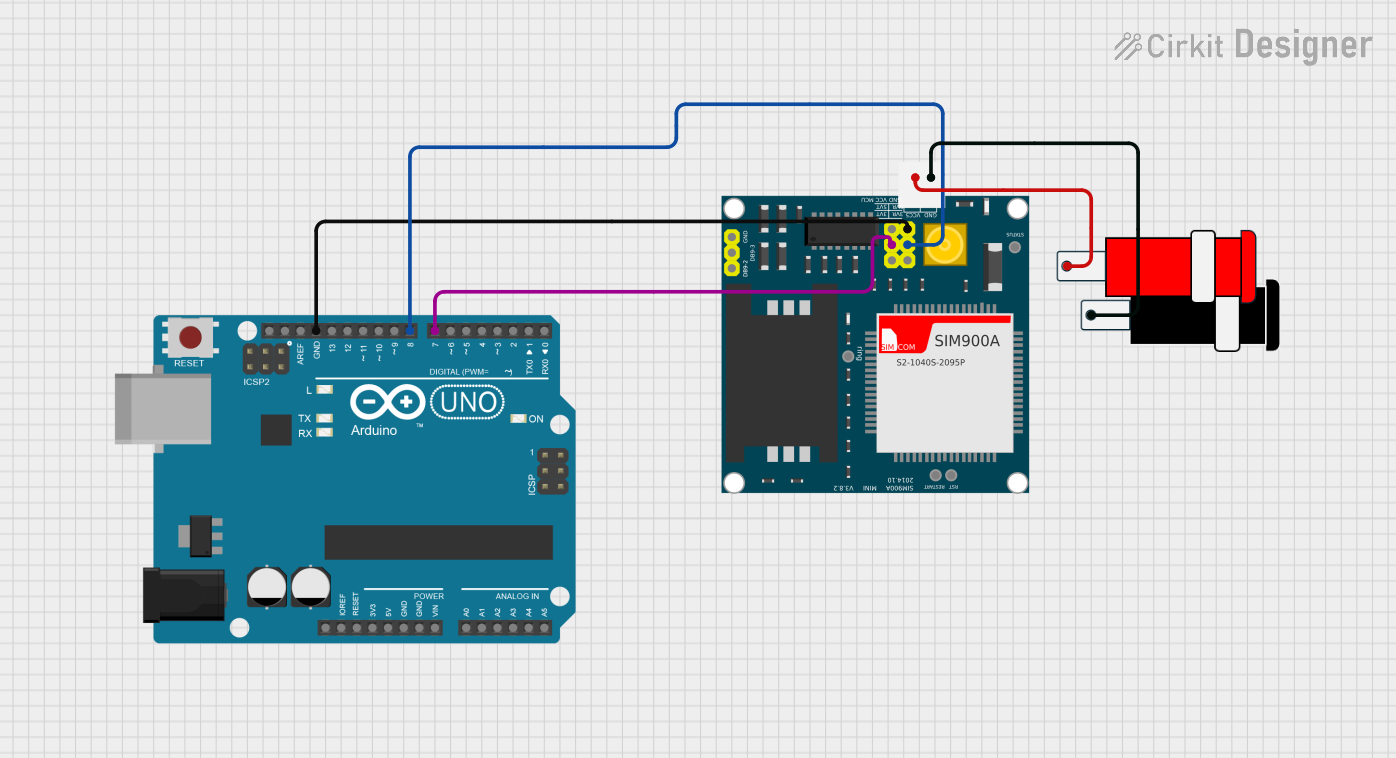
 Open Project in Cirkit Designer
Open Project in Cirkit DesignerExplore Projects Built with SIM900A gsm module

 Open Project in Cirkit Designer
Open Project in Cirkit Designer
 Open Project in Cirkit Designer
Open Project in Cirkit Designer
 Open Project in Cirkit Designer
Open Project in Cirkit Designer
 Open Project in Cirkit Designer
Open Project in Cirkit DesignerCommon Applications and Use Cases
- IoT Devices: Enables remote data transmission for smart devices.
- Remote Monitoring: Used in systems like weather stations, security systems, and industrial monitoring.
- SMS and Voice Communication: Facilitates sending/receiving SMS and making voice calls.
- GPRS Data Transmission: Provides internet connectivity for data logging and real-time updates.
- Home Automation: Integrates with microcontrollers for controlling devices remotely.
Technical Specifications
Key Technical Details
| Parameter | Value |
|---|---|
| Operating Voltage | 3.2V to 4.8V (Typical: 4.0V) |
| Operating Current | Idle: ~20mA, Active: ~200mA, Peak: ~2A |
| Frequency Bands | Dual-band GSM 900/1800 MHz |
| Communication Protocols | AT Commands (via UART) |
| GPRS Connectivity | Class 10, Max. 85.6 kbps (downlink) |
| SMS Support | Text and PDU modes |
| Voice Support | Full-duplex voice communication |
| Dimensions | 24mm x 24mm x 3mm |
| Operating Temperature | -40°C to +85°C |
Pin Configuration and Descriptions
The SIM900A module typically comes with a breakout board for easier interfacing. Below is the pin configuration:
| Pin Name | Description |
|---|---|
| VCC | Power supply input (3.2V to 4.8V). |
| GND | Ground connection. |
| TXD | Transmit data pin (UART output). Connects to RX of the microcontroller. |
| RXD | Receive data pin (UART input). Connects to TX of the microcontroller. |
| DTR | Data Terminal Ready. Used for sleep mode control (optional). |
| RST | Reset pin. Active low, used to reset the module. |
| MIC+ | Microphone positive input for voice communication. |
| MIC- | Microphone negative input for voice communication. |
| SPK+ | Speaker positive output for voice communication. |
| SPK- | Speaker negative output for voice communication. |
| NET | Network status LED pin (blinks to indicate GSM network status). |
Usage Instructions
How to Use the SIM900A in a Circuit
- Power Supply: Ensure a stable power supply of 4.0V (typical). Use a capacitor (e.g., 1000µF) near the module to handle peak current demands.
- UART Communication: Connect the TXD and RXD pins to the RX and TX pins of your microcontroller, respectively. Use a level shifter if your microcontroller operates at 5V logic.
- Antenna: Attach a GSM antenna to the module for proper signal reception.
- SIM Card: Insert a valid SIM card into the SIM slot.
- Initialization: Use AT commands to initialize the module and configure its settings.
Important Considerations and Best Practices
- Power Supply: The module can draw up to 2A during transmission. Ensure your power source can handle this.
- Antenna Placement: Place the antenna away from other components to avoid interference.
- UART Voltage Levels: If your microcontroller operates at 5V logic, use a level shifter to avoid damaging the module.
- Network Compatibility: The SIM900A supports GSM 900/1800 MHz bands. Ensure your SIM card and network provider support these bands.
- AT Commands: Familiarize yourself with the AT command set for configuring and using the module.
Example: Connecting SIM900A to Arduino UNO
Below is an example of how to send an SMS using the SIM900A module with an Arduino UNO:
#include <SoftwareSerial.h>
// Define RX and TX pins for SoftwareSerial
SoftwareSerial SIM900(7, 8); // RX = Pin 7, TX = Pin 8
void setup() {
// Initialize serial communication
Serial.begin(9600); // For debugging
SIM900.begin(9600); // For SIM900A communication
// Wait for the module to initialize
delay(1000);
Serial.println("Initializing SIM900A...");
// Send AT command to check communication
SIM900.println("AT");
delay(1000);
if (SIM900.available()) {
Serial.println("SIM900A is ready!");
}
// Send SMS
sendSMS("+1234567890", "Hello from SIM900A!");
}
void loop() {
// Nothing to do here
}
void sendSMS(String phoneNumber, String message) {
SIM900.println("AT+CMGF=1"); // Set SMS mode to text
delay(1000);
SIM900.print("AT+CMGS=\"");
SIM900.print(phoneNumber);
SIM900.println("\"");
delay(1000);
SIM900.print(message); // Message content
delay(1000);
SIM900.write(26); // Send Ctrl+Z to send the SMS
delay(5000);
Serial.println("SMS sent!");
}
Troubleshooting and FAQs
Common Issues and Solutions
Module Not Responding to AT Commands:
- Cause: Incorrect UART connection or baud rate.
- Solution: Verify TXD and RXD connections. Ensure the baud rate matches (default: 9600).
No Network Connection:
- Cause: Poor signal strength or incompatible SIM card.
- Solution: Check the antenna connection and ensure the SIM card supports GSM 900/1800 MHz bands.
Module Restarts During Operation:
- Cause: Insufficient power supply.
- Solution: Use a power source capable of providing at least 2A. Add a capacitor near the module.
SMS Not Sending:
- Cause: Incorrect SMS format or SIM card issue.
- Solution: Ensure the module is in text mode (
AT+CMGF=1) and the SIM card has sufficient balance.
FAQs
Q: Can the SIM900A module connect to 3G or 4G networks?
A: No, the SIM900A only supports GSM 900/1800 MHz bands.Q: What is the maximum baud rate supported by the SIM900A?
A: The SIM900A supports baud rates up to 115200 bps.Q: Can I use the SIM900A module for GPS tracking?
A: No, the SIM900A does not have GPS functionality. Use a dedicated GPS module for tracking.Q: How do I reset the module?
A: Pull the RST pin low for at least 100ms to reset the module.
This documentation provides a comprehensive guide to using the SIM900A GSM module effectively. For further details, refer to the official SIMCOM datasheet.